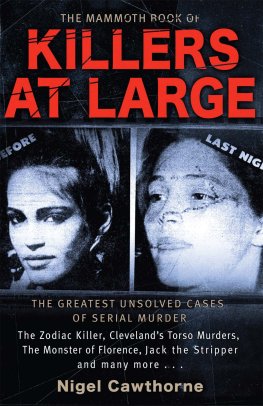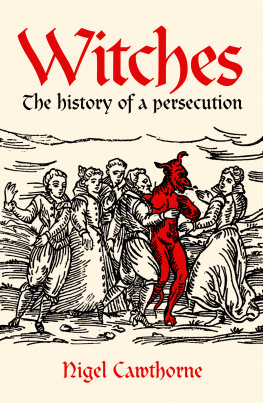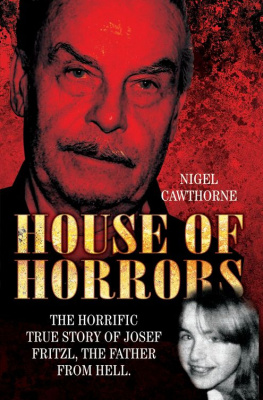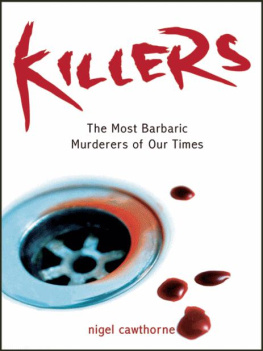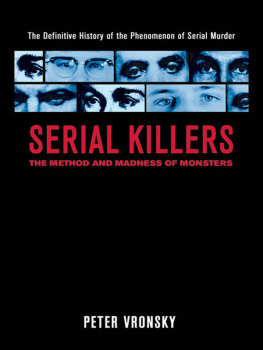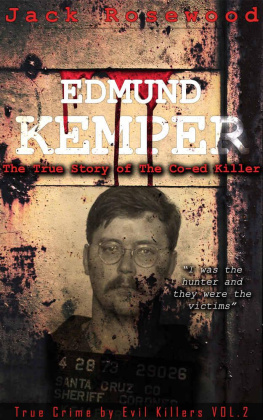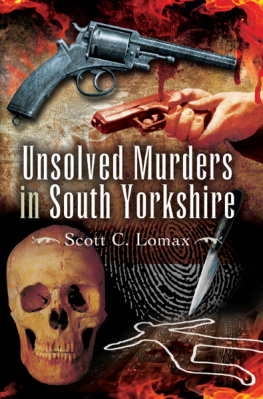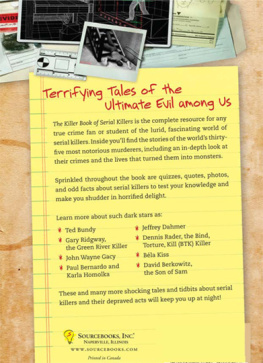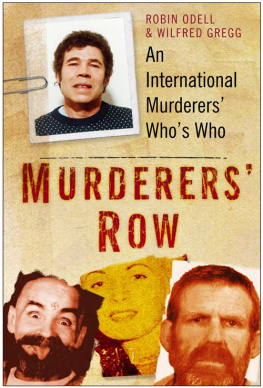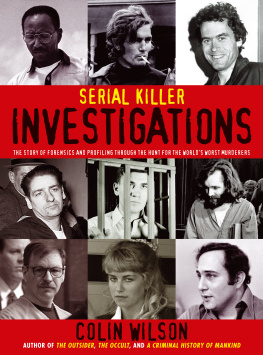Nigel Cawthorne
The Mammoth Book of
KILLERS AT LARGE
There are serial killers everywhere. They inhabit our nightmares. Some have long careers. It took detectives 15 years to track down Gary Leon Ridgway, the Green River Killer who was responsible for the murder of at least 49 women in Washington State. Having passed a polygraph test in 1984, he was arrested in 2001 after DNA evidence linked him to his victims. He plea-bargained his way out of a death sentence and was sentenced to 49 life terms with no possibility of parole.
Dennis Raderthe BTK Bind Torture Kill Stranglermurdered ten in Kansas between 1974 and 1991. He was only caught in 2005 after he began taunting the authorities in a series of letters to the Wichita Eagle. Eventually he was persuaded to send in his writings on floppy disk. Forensic examination of the disk revealed it had previously been used by the Christ Lutheran Church, along with the name Dennis. A quick Internet search revealed that Rader was president of the church council. He showed no remorse and was given ten consecutive life terms, requiring that the 61-year-old Rader serves at least 175 years before being eligible for parole. He is held in solitary confinement.
Fred and Rosemary West went on a killing spree that lasted 37 years. He was charged with 11 murders, though boasted he had killed many more before he hanged himself in his cell in 1995. Rosemary West was found guilty of ten murders and sentenced to life with a recommendation from the judge that she never be released.
Dr Harold Shipman killed more than 250 over his 30-year career, though the true number will never be known. After being convicted on 15 sample chargesand sentenced to 15 life termshe committed suicide in jail without confessing or explaining his crimes. Prolific American serial killer Henry Lee Lucas claimed to have killed over 3,000 people in a career that might have lasted for 32 years. A more likely number is 350among the victims was his own mother, whom he killed in 1960. Released in 1975, he went on the rampage with fellow serial killer Otis Toole until they were arrested in 1983. Toole died from cirrhosis of the liver in prison in Florida while serving six life sentences. George W. Bush agreed to the commutation of Lucass death sentencethe only time he did so while Governor of Texasand Lucas died of heart failure in jail in March 2001.
While these killers were eventually caught, there are plenty who have not been caught. The FBI estimate that there are between 35 to 50 serial killers at large in the United States. Other estimates put the number of killers closer to 500. In either case officials expect these numbers to continue their dramatic rise. As long ago as 1984 the FBI Behavioral Unit study of serial murder said that serial killing had reached an almost epidemic proportion. It is believed that presently there are up to 6,000 people a year dying in the hands of a serial killer in the US alone.
Until recently serial killing has been thought of as a North American activity, though the British have struggled to produce some notably colourful cases. But now serial killing seems to be on the rise across the globe. Serial killing has become part of the national landscape in South Africa and the former Soviet Union. Even historically peaceful places such as Costa Rica and Belize now have their own serial killer.
Although it was once thought of as the province of predominantly brooding white loners, black men now join in, along with family men and those generally regarded as the life and soul of the party. Myra Hindley, Rosemary West and Aileen Wuornos have shown that even women are joining in.
But the Mammoth Book of Killers at Large concentrates on those killers who have not yet been caught. Many are current killers who might, at this very moment, be out stalking their victims. Others are less active, while some criminologists believe that serial killers only stop because they are dead or in jail. But Dennis Rader was dormant for 14 years before his boastfulness got the better of him. During that time he was a family man, a pillar of the community and an elected official. Other killers, once an area gets too hot for them, simply move on.
In some cases, the killer has been cleared by a court and is thus at large to kill again. In others, a man who is plainly not guilty has been railroaded by the system, while the real perpetrator goes free. And sometimes a culprit has been jailed for a series of killings, then blamed for others he has not been convicted of, or even charged with, that may well be the work of another. It is always tempting for a police department to clear its books by attributing numerous unsolved crimes to a fall guy who has already been convicted of something else.
I have also included some historic cases for completeness. True, Jack the Ripper can no longer be alive. But he was never caught or even convincingly identified. He is of enduring interest. New theories about him emerge regularly and he intersects interestingly with other, more up-to-date, cases.
Perhaps because murder is the stock in trade of the Hollywood thrillers, America seems to have cornered the market in coldhearted killing. The United States has a history of violence that goes back to the foundation of the colonies there. Before Australia became Britains penal colony, British felons could expect to be transported to North America to work on the plantations there.
Among them were numerous murderers who had escaped the hangman by taking benefit of clergy. If a criminal could claim to the authorities that he was a clergyman, he would be handed over to be tried by the ecclesiastical courts which could not impose the death sentence. In the 16th, 17th and 18th centuries, to demonstrate that you were a clergyman, all you had to do was show that you were literate. And to do that, all you had to do was read aloud the 51st Psalm. This became known as the neck verse and illiterate neer-do-wells simply memorized it.
Other murderers turned up in the New World voluntarily. If you had killed in the old country, the easiest way to escape justice was to jump on a ship heading westwards. The law was hardly likely to find you if you put the North Atlantic between you and the courts. In America you could change your name and begin a new lifeeven kill again if you were so inclined. There were plenty of opportunities to make a career in homicide in the Indian wars and the lawless streets of the Wild West. And by the time gangsters began massacring each other during the Prohibition era, murder had become an American institution.
Because of the transient nature of American society, it is easy for a killer to up sticks and move on once one city or state gets too hot for them. And the victims are often transients too. If a person killed has no family or friends, the authorities are under little pressure to find out who murdered them. In the cases presented here, in a chilling number of instances, the victim could not be identified. No missing person report had been filed on anyone answering their descriptionso, presumably, no one missed them. If the police cannot identify the victim and cannot find out anything about them from those who knew them, finding the culprit is an all but impossible task and the killers are left at large.
As in so many other things, America leads the world in modern murder. Usually Jack the Ripper is thought to be the first serial killerthat is, the story of his killings came out as a serial, episode after episode, in the newspapers. But it is not true. Three years before Jack began killing ladies of the night in Whitechapel, an unidentified person began murdering a series of African-American servant girls in Austin, Texasfinishing his spree with two white society ladies, before he disappeared forever. As he was never caught, he is, like Jack the Ripper, technically still at large. Indeed he may even be the same man. One suspect in the Austin, Texas servant-girl murders jumped on a ship shortly afterwards, only to turn up in Whitechapel three years later where he was named in the Ripper investigation.

